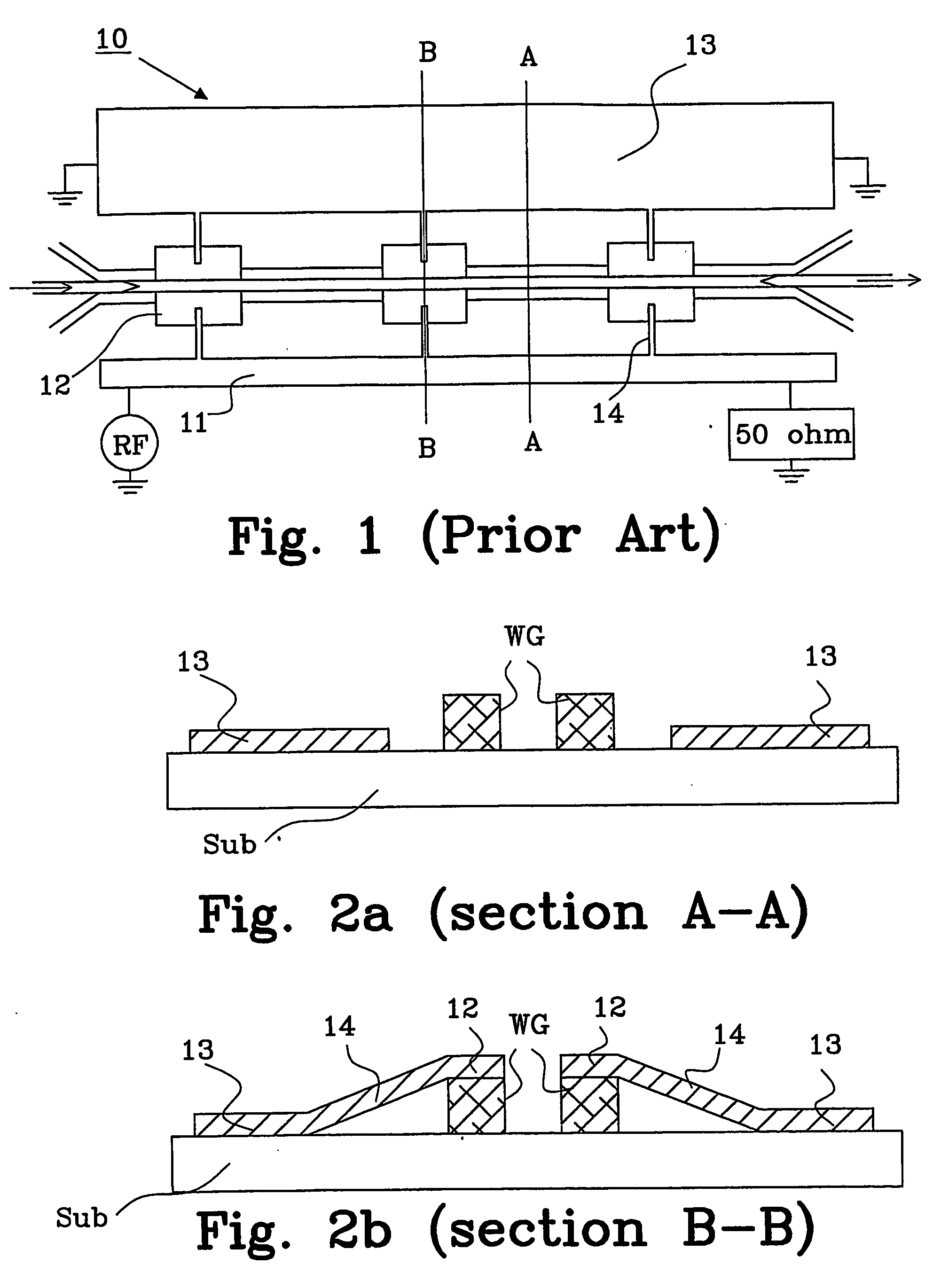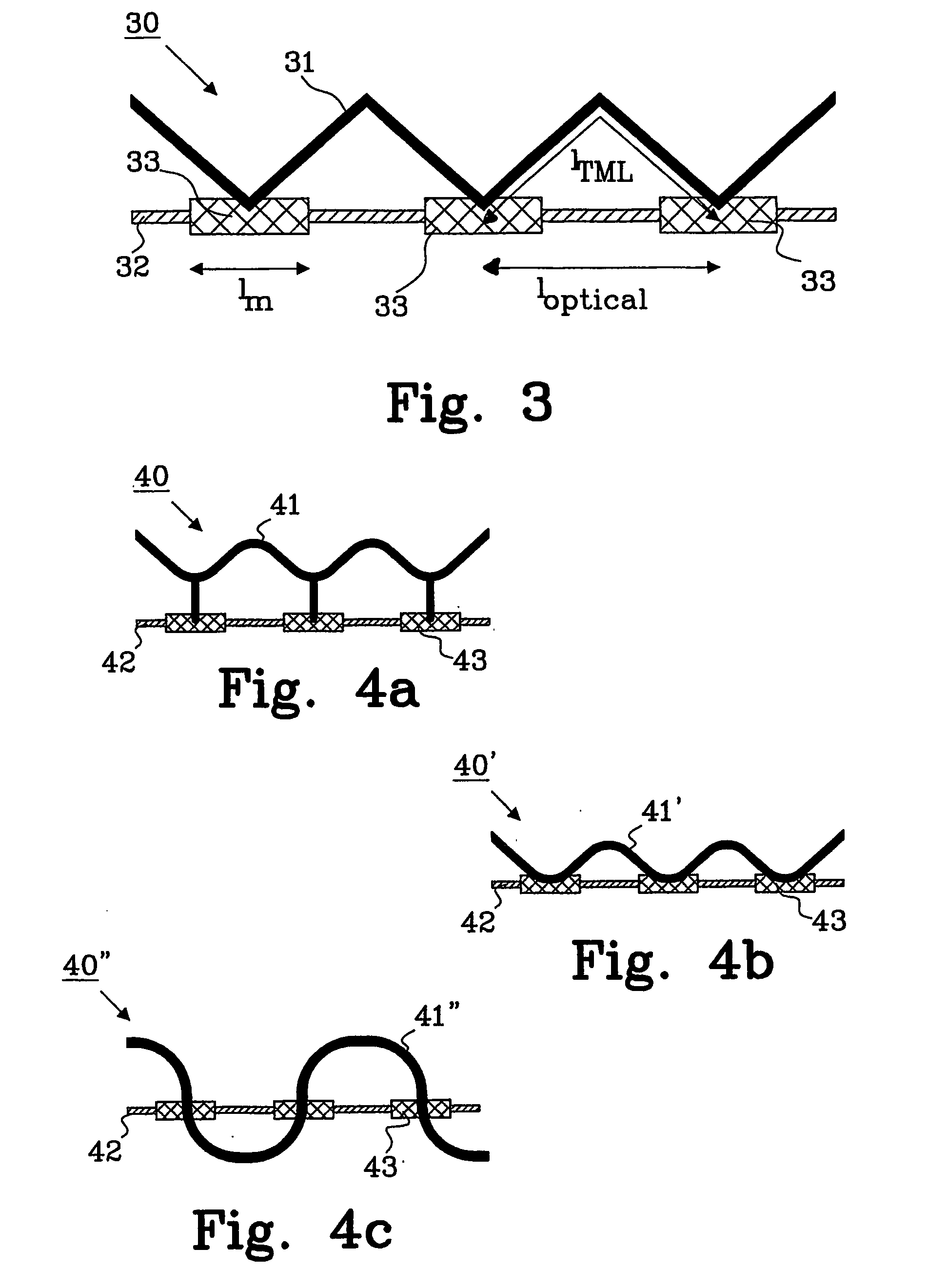Optical modulator and a method for adapting an optical modulator
a technology of optical modulator and optical modulator, applied in the field of optical modulator, can solve the problems of low characteristic impedance of electrical transmission line, affecting the performance of optical modulator, so as to avoid the high impedance level of passive waveguide
- Summary
- Abstract
- Description
- Claims
- Application Information
AI Technical Summary
Benefits of technology
Problems solved by technology
Method used
Image
Examples
example 3
[0060] A TML implementation, corresponding to the present invention, as a microstrip on BCB with a maximum Zp of 75Ω, using a capacitively loaded line and having εr=2.7, εeff≈2.
[0061] With ZB=50Ω, then lTML / loptical=1.6 and Cm*lm / ls=130 pF / m.
[0062] A typical Cm for an electroabsorption modulator (EAM) is at least 700 pF / m, hence, lm / ls<0.185.
[0063] The design can be further improved by reducing the feed-lines (see Walker's design) or the conductive legs (see Betts' design) to a minimum. Ideally the modulator should be an integrated part of the passive waveguide, i.e. cascaded structure as illustrated in FIGS. 7a and 7b. This results in: (Cm-Cp)lmls=n02-(nplTMLloptical)2c0ZBn0=Ceff(11)
[0064] There are two reasons for this:
[0065] 1) The duty-cycle is improved by a ratio of ratio≈CmCm-Cp(12)
or typically 10% for an EAM implementation, where Cm≈700 pF / m, Cp≈70 pF / m.
[0066] 2) To avoid the implementation with conductive legs, which will avoid the parasitic inductance Ls as prev...
PUM
| Property | Measurement | Unit |
|---|---|---|
| impedance | aaaaa | aaaaa |
| impedance | aaaaa | aaaaa |
| height | aaaaa | aaaaa |
Abstract
Description
Claims
Application Information
 Login to View More
Login to View More - R&D
- Intellectual Property
- Life Sciences
- Materials
- Tech Scout
- Unparalleled Data Quality
- Higher Quality Content
- 60% Fewer Hallucinations
Browse by: Latest US Patents, China's latest patents, Technical Efficacy Thesaurus, Application Domain, Technology Topic, Popular Technical Reports.
© 2025 PatSnap. All rights reserved.Legal|Privacy policy|Modern Slavery Act Transparency Statement|Sitemap|About US| Contact US: help@patsnap.com



